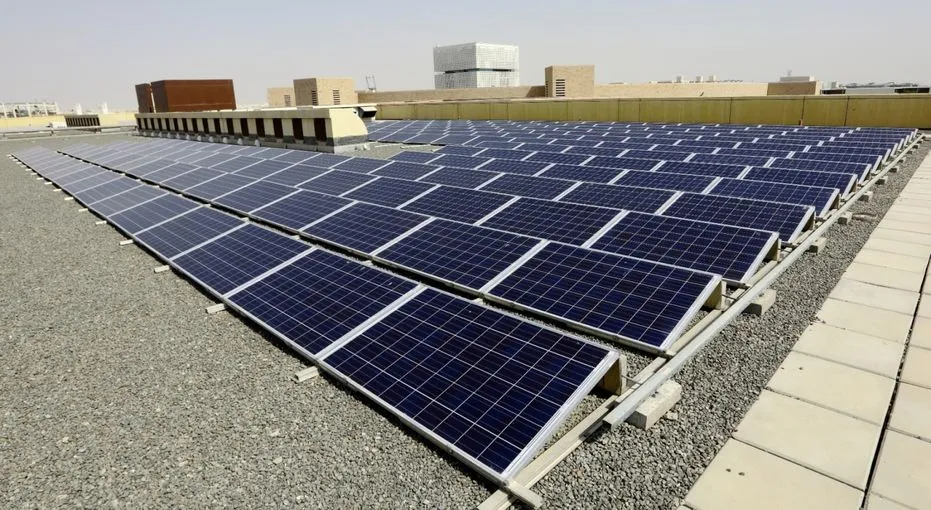In Qatar’s rapidly changing energy landscape, smart grid technologies are playing a pivotal role in accelerating solar power adoption. As a nation blessed with abundant sunshine, Qatar is moving decisively toward renewable energy, and smart grids are the invisible yet powerful framework enabling this transformation. This article explores the key smart grid technologies being deployed in Qatar to integrate solar energy effectively, reliably, and intelligently.
Real Time Monitoring and Control Systems
Real time monitoring and control systems provide continuous oversight of solar generation, grid status, and energy demand. Using sensors and communication networks, operators can track solar output from rooftop and utility scale installations in real time. This data flows to control centres where advanced software tools analyse production and forecast demand. The ability to make split second adjustments ensures supply and demand remain balanced, minimising renewable energy curtailment and optimising grid performance. For end users, this translates into more stable voltage and fewer disruptions.
Advanced Inverter Technologies
Advanced inverters act as the bridge between solar panels and the grid. Unlike traditional inverters, these smart inverters support functionalities like voltage regulation, reactive power support, and anti is landing protection. In Qatar’s context, where solar installations feed into both central and local distribution grids, these inverter features stabilise grid voltage and frequency even during variable solar radiance. Such inverters actively contribute to overall grid reliability and allow higher penetration of solar energy without compromising power quality.
Distributed Energy Resource Management Systems (DERMS)
DERMS software platforms coordinate diverse solar assets whether rooftop panels on private homes, commercial solar installations, or utility scale solar farms. These platforms aggregate performance data, forecast generation, schedule dispatch, and orchestrate energy flows among multiple sites. DERMS enables operators to dispatch solar power intelligently, shifting generation to times of peak demand or high solar output. In Qatar, where peak electricity use often coincides with hot midday conditions, DERMS helps ensure solar generation is fully leveraged to reduce reliance on fossil fuel generators.

Energy Storage Integration
While solar power is abundant in Qatar, sunlight varies throughout the day, and energy storage becomes essential. Battery systems paired with solar installations store surplus power during peak sunlight hours and supply energy during evening demand. Smart grid technologies orchestrate this flow, deciding when to charge or discharge batteries based on solar forecast, load demand patterns, and electricity pricing signals. The result is smoother supply curves, reduced peak demand peaks, and enhanced grid resilience, especially during sudden solar dips or cloudy conditions.
Smart Metering and Demand Response Programs
Smart meters and demand response mechanisms empower consumers to play an active role in solar integration. Smart meters provide detailed energy usage information and enable dynamic pricing. Demand response programs invite consumers to shift flexible loads like air conditioning or electric water heating to times of high solar generation. With real time feedback and price incentives delivered via apps or in home displays, consumers feel more connected to the energy system. In Qatar, this human engagement helps flatten demand curves and optimizes use of solar power when it’s most abundant.
AI Driven Forecasting and Analytics
Artificial intelligence and machine learning models forecast solar radiance, weather conditions, and electricity demand with remarkable precision. These forecasts feed into grid control systems, DERMS software, and storage management tools, enabling preemptive adjustments to generation and dispatch plans. For example, if clouds are expected to reduce solar output mid afternoon, the system can pre charge batteries or schedule gas turbine backup ahead of time. In Qatar’s challenging climate, these predictive capabilities reduce sudden swings and maintain smooth operations.
Microgrids and Virtual Power Plants (VPPs)
Smart grid technology also supports the development of microgrids and virtual power plants, which cluster solar assets and storage into localized energy networks. These systems can operate independently or in coordination with the national grid. For remote communities or large facilities in Qatar, microgrids offer reliable power even during main grid outages and can island themselves when needed. Virtual power plants aggregate many smaller solar installations and battery systems into a single controllable resource for operators, enabling large scale balancing and resource management.

Secure Communication and Cybersecurity
As smart grid networks collect vast amounts of data and control critical infrastructure, cybersecurity becomes paramount. In Qatar, grid operators deploy encrypted communication protocols, secure gateways, firewalls, and monitoring systems to guard against cyber threats. Regular penetration testing, anomaly detection, and system hardening protect smart inverters, DERMS platforms, and IoT sensors from malicious attacks. This ensures solar powered energy systems remain reliable and trustworthy.
Customer Centered Experience and Human Engagement
A critical yet often overlooked element is making the smart grid experience human centered. Utilities and solar service providers in Qatar offer intuitive apps, dashboards, and alerts that keep consumers informed about their solar generation, energy savings, and environmental impact. Educational campaigns and interactive tools help homeowners understand how shifting usage to sunny periods benefits both their bills and the national grid. This human touch turns consumers into partners in the transition to clean energy.
Regulatory and Policy Support
Effective policy and regulatory frameworks underpin smart grid advancements. In Qatar, government initiatives provide incentives for solar installations, net metering schemes, and performance based tariffs. Regulations establish standards for smart inverter capabilities, interconnection protocols, and data privacy. Progressive policies encourage investment in smart grid infrastructure and reinforce public trust in solar energy adoption. Combined with pilot projects and public private collaboration, policy support accelerates smart grid development and solar integration.
Challenges and the Road Ahead
Although Qatar has made significant strides, certain challenges remain. Integrating large scale solar while maintaining grid stability requires continued investment in high precision monitoring, storage capacity, and predictive analytics. Workforce training, public awareness, and interoperability between various smart grid vendors also play a key role. However, with smart grid standards evolving, emerging technologies like vehicle to grid (V2G), and expanding energy storage costs dropping rapidly, the future looks promising. Qatar is positioned to harness its solar riches and set an example of smart, sustainable energy transformation.
Conclusion
Smart grid technologies are the silent champions behind Qatar’s solar revolution coordinating generation, storage, distribution, and demand with intelligence and precision. Real time monitoring, advanced inverters, DERMS, energy storage, AI forecasting, micro grid networks, and human focused customer tools converge to enable efficient solar power adoption. As Qatar continues building its renewable infrastructure with supportive policies and human engagement, these smart technologies create a more resilient, sustainable, and empowered energy system. The nation is transforming sunlight into clean power and smart grids are making it all possible.
Do follow Gulf Magazine on Instagram.
Also Read – Edge Computing Boosts Qatar’s High Performance Factories to New Heights



